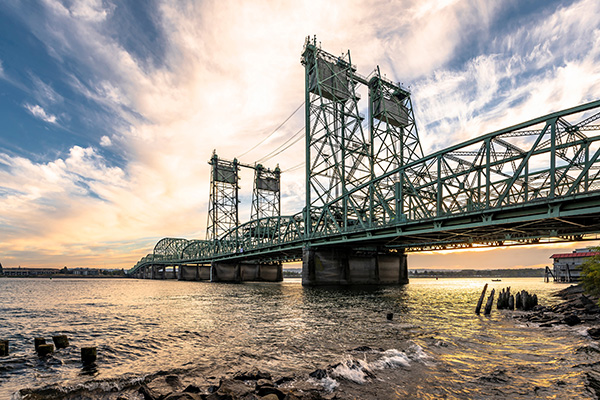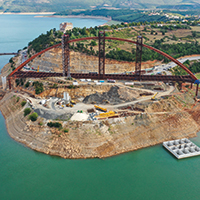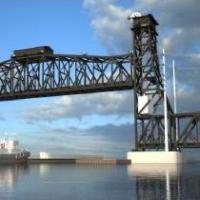 Interstate 5 Bridge spanning the Columbia River is at risk of collapse in the case of a major earthquake (Shutterstock: Vitpho).
Interstate 5 Bridge spanning the Columbia River is at risk of collapse in the case of a major earthquake (Shutterstock: Vitpho).
By the end of 2023, the project to replace the Interstate 5 Bridge which is seismically vulnerable due to its timber pile foundations being set in sandy soil secured approximately US$4 billion of the estimated total cost of US$6 billion. The need to address the bridge’s condition poses a pressing concern as its location within the Pacific Northwest of the USA puts it at risk of a severe earthquake. In December 2023, the replacement was awarded a US$600 million federal grant from the US Department of Transportation’s Mega Grant scheme. In addition, the state of Washington committed US$1 billion in 2022, the state of Oregon matched the amount in 2023, and both states authorised tolling, which is expected to contribute around US$1.1-1.6 billion. Currently, efforts to secure the remaining funding from other federal grants are ongoing while community engagement and pre-construction stages are being carried out.
The bridge comprises a pair of vertical lift steel through-truss spans that cross the Columbia River between the states of Washington and Oregon. Each span of the 1,078m-long bridge carries three vehicle lanes and reaches a vertical clearance of 53.6m above the river when fully opened.
The replacement is also motivated by the expensive upkeep of the existing bridge. The grease required to grease by hand the lift mechanism’s cables has been estimated to cost approximately US$40,000 annually. In addition, the bridge’s other operating costs have been evaluated at US$1.2 million a year.
The Washington and Oregon Departments of Transportation initiated the joined project to replace the aged bridge with a modern and seismically resilient crossing in 2019. WSP was assigned as the main general engineering consultant on the project.
Currently, construction is tentatively set to begin at the end of 2025 or start of 2026 after further analysis and assessments have been carried out.





